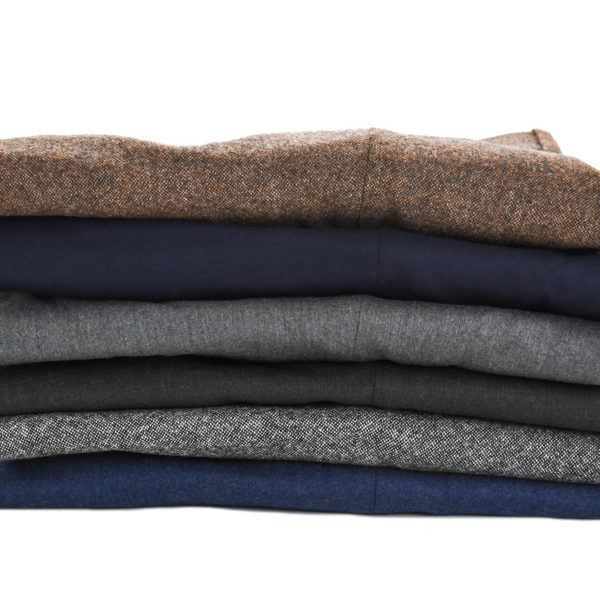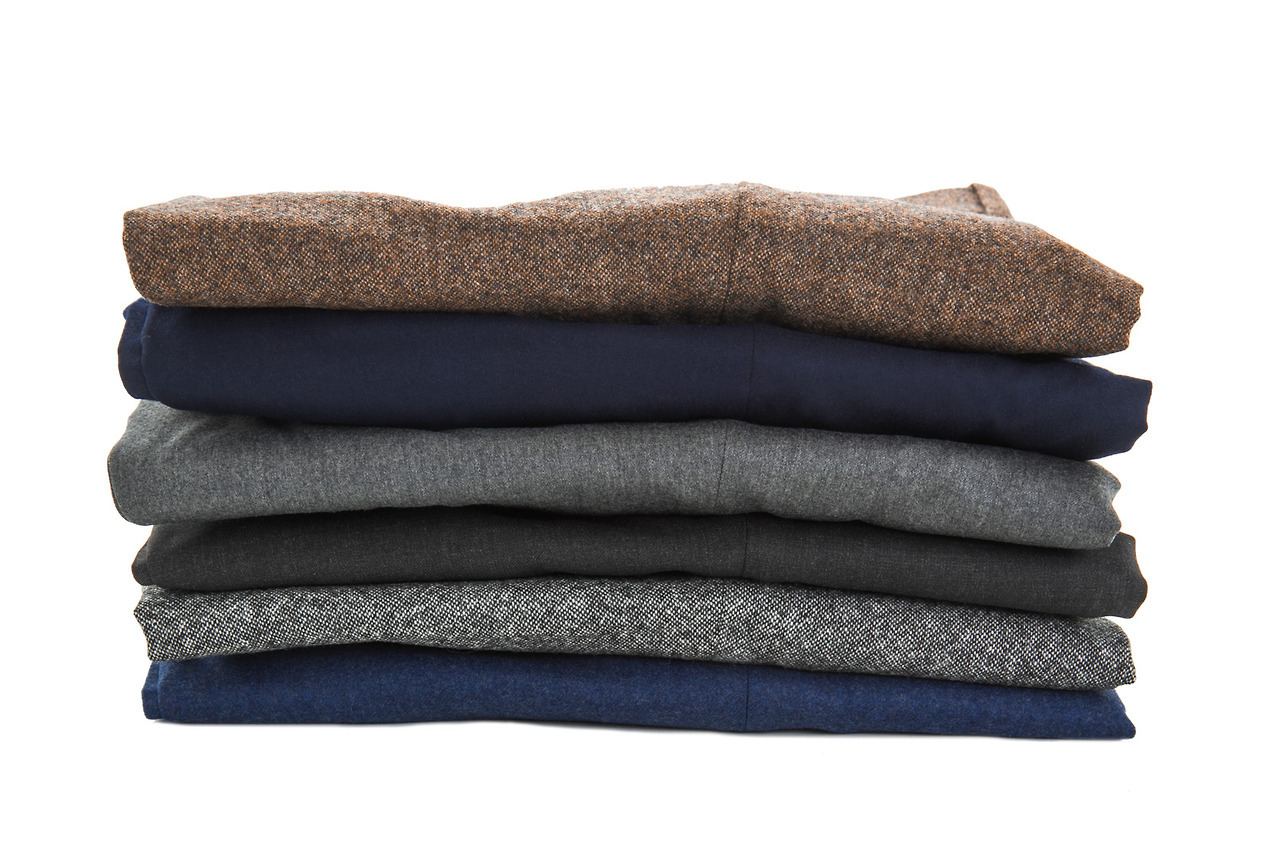
Trousers are usually in the background of an outfit. They play a secondary role, setting the stage for whatever you’re wearing up top. As such, it’s easy to forget about them – especially when you’re building a wardrobe. Almost everyone has blue jeans nowadays, and we’ve talked about the importance of grey pants. However, just as important as color is finding things in the right cloth. Spring and summer trousers are relatively easy since everything boils down to linen, cotton, and tropical wool. Your options can explode once it comes to fall and winter. A rundown of some of the more useful fabrics to consider:
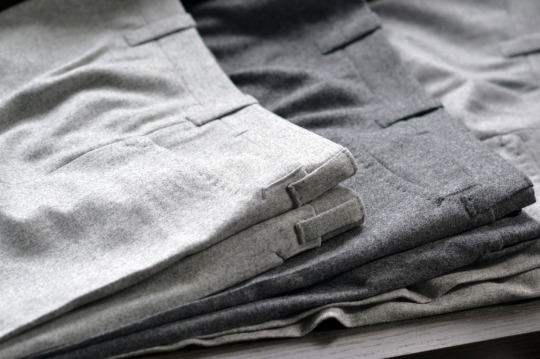
Wool Flannel: This is your workhorse. If you wanted, you could build a wardrobe of just light- to mid-gray flannel trousers and be done with it. The fabric will go with everything from sport coats to sweaters to some casualwear, and depending on your region, can be worn almost year-round. Wool flannel is something like a smarter counterpart to cotton flannel – it has a bit of a nap on the surface, which gives it that soft hand and incredible comfort (the material was once even used for underwear).
When buying a pair, pay attention to the weight and weave. Mid-weight to heavyweight trousers will provide better insulation and drape. There’s also worsted flannel, where you can see a subtle twill running under the nap; then woolen, where you can’t. The first will be harder wearing, but the second will often have a bit more variegation in the color.
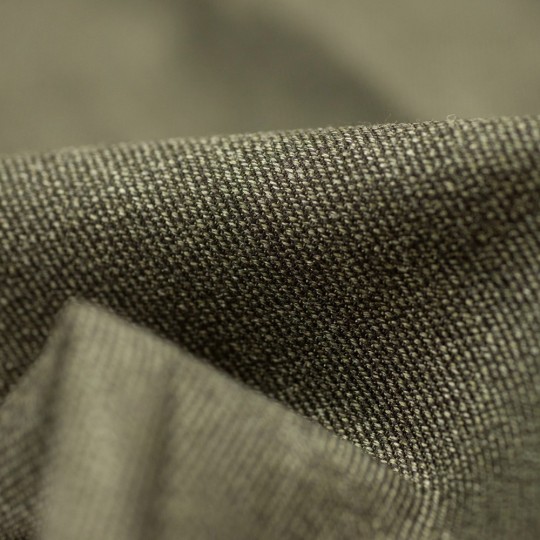
Cavalry Twill, Covert Twill, and Whipcord: For all intents and purposes, these are basically the same thing. These steeply angled twills, made from either cotton or wool, were originally designed for hardwearing environments (think: countryside retreats and sporting events). Today, however, much like rustic tweeds and waxed cotton outerwear, they’ve come to define a sort of autumn and winter style that can be worn almost anywhere. You’re just as likely to see these today in downtown cafes as country homes.
If you’re looking to expand past flannel trousers, start here. In neutral colors such as khaki, grey, and light brown, they can add some diversity to your wardrobe while still remaining versatile. If you go for a darker shade, look for something with mottling, such as these Rotas at No Man Walks Alone and The Armoury. Darker colored trousers can be harder to wear, but these shades can be nice in cavalry twill and whipcord because the colors look so great mottled.
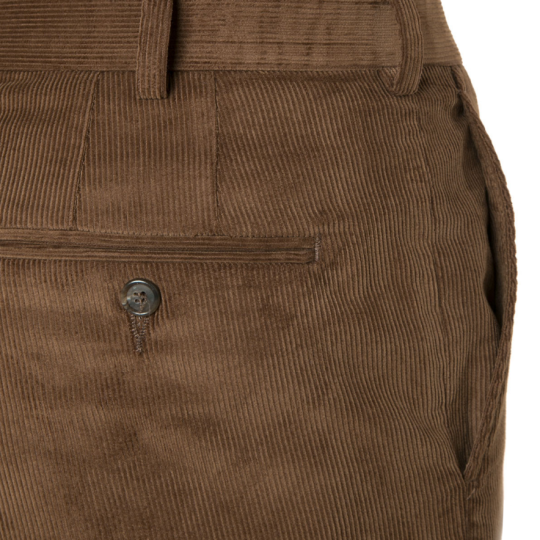
Corduroy: A little less useful with sport coats than the options mentioned above, but so wonderfully democratic and utilitarian. As Jesse said in his address to the Corduroy Club (yes, that’s a real thing), “corduroy has stood for what is right in our lives. Intellectual rigor. Fresh air. The comfort of a crackling fire. It is a fabric as forgiving and enduring as our spirits at their best.” Corduroy is the fabric of living – whether that’s tucking your corduroy pants into your boots and feeding the pigs, or wearing them around college campuses.
Corduroy is made with wales, which is a term for the textured ribs running down the pants. The thinner the wale, the more modern the trousers will look; the wider the wale, the frumpier and old school. Needlecord, which is the thinnest of wales, can be especially nice as five-pocket jeans.
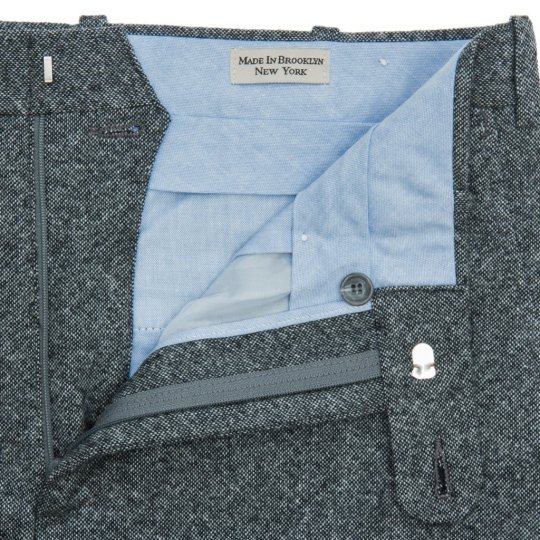
Tweed: Tweed can be tricky, as so many are either too loosely woven for trousers (which means they’ll bag easily) or they’re too bold for practical wear. The most useful in this category will be Donegal, which is a medium- to heavy-weight tweed that gets its name from the Donegal county of Ireland (where the fabric has been traditionally made, even if Donegal today is generically used for a style). Donegal tweed is defined by its nonlustrous, slubby yarns, which have flecks of color throughout. That’s what gives the fabric that beautiful texture you see above.
Bold pants can be hard to wear, but Donegal is surprisingly useful. With a pattern as subtle as this, you can pair them with anything from sweaters to waxed cotton outerwear to even contrasting tweed sport coats. I like them in mid-gray, such as this pair at our sponsor Dapper Classics.
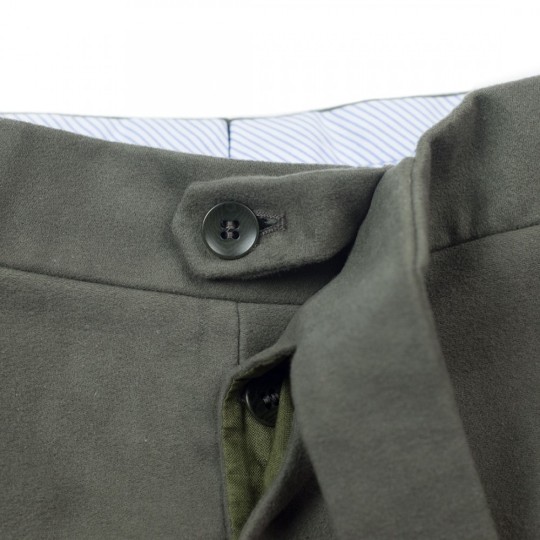
Moleskin: Every description of moleskin has to start with a caveat that these are not, indeed, made from the skin of moles. Instead, this is a cotton fabric with a soft, almost suede-like texture. Like many of the fabrics mentioned above, moleskin started its life as a country cloth, used for hardwearing activities such as getting through thick, prickly brush. Today, it’s a common material in fall and winter clothes.
Moleskin looks great when new, but it can also age in a slightly patchy way that I find makes it difficult to pair with tailored clothes. Still, it’s great for casualwear, particularly if you want something with a bit more interesting texture. And it’s fantastically comfortable. You’ll find them most useful in colors such as olive or khaki. Ledbury even has them right now as five-pocket pants.

Gabardine: A tightly woven fabric, generally made in wool but also sometimes cotton, that simply drapes beautifully. It’s a dressier looking cloth than many of the options mentioned above, but terrific with things such as hopsack sport coats. Wool gabardine can be an ideal cloth for shoulder seasons, as it wears cool in the spring and warm in the fall. Depending on where you live, they can be a little too chilly or hot, however, in the summer and winter months.
Unfortunately, gabardine trousers can be hard to find. As more and more of tailoring disappears, the once-popular cloth hasn’t fared as well in sales as the more popular Super 100s and basic flannels. If you can find a pair, pick them up in colors such as mid-gray or tan. The ones pictured above are available at O’Connell’s.
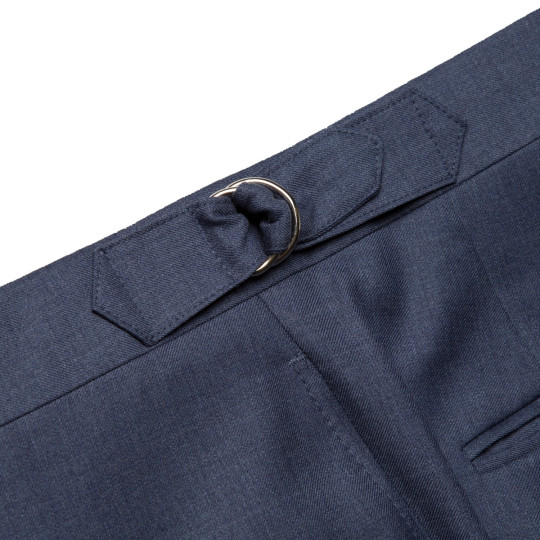
Year Round Wools: All the options above are specific to fall and winter, but year-round wools are worth a mention. Typically, these are mid-weight wools, often woven in silkier Super 100s numbers, and they’re designed to go with almost anything. Pick them in solid colors such as grey or taupe. Navy can be nice, but you have to have the right clothes.
Year-round wools can sound like the perfect solution for someone looking to build a minimalist wardrobe. And they are, depending on what kind of wardrobe you’re trying to build. At the same time, they can feel a bit too thin and silky for rugged jackets such as Barbour. And they won’t have the breathability you’ll want on a truly hot day. If you have the time and money for it, you’d be better off building a seasonal wardrobe – tropical wools and linens for summer; heavier flannels and cavalry twills for winter. Year-round fabrics can be nice as a supplement, but leave you wanting if your wardrobe only consists of them.
If you do get a year-round wool, consider solid colors and subtle patterns. Mid-grey pick-and-pick weaves, for example, can be surprisingly useful.
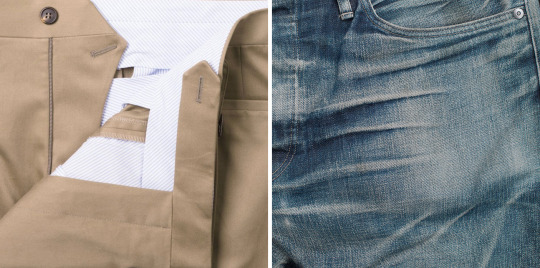
Chinos and Denim: The two fabrics that actually do work year-round, at least in today’s dressed down world. If you’re buying a pair of chinos, pay attention to things such as the fit, side seams, and waistband. Chinos that have a cleaner, more tailored look, such as these from Drake’s and Ring Jacket, are easier to pair with sport coats than the more casual varieties you’ll find at J. Crew. See our guide on how to judge different types of chinos.
Denim will be the foundation for almost any casual wardrobe, although you can also make them work in certain cases with sport coats. Just find a straight-legged pair that sits a bit higher on the hips (although, don’t go too high). Levi’s Vintage Clothing’s 1947 and 1954 versions of their iconic 501 jeans are great for these purposes (especially in New Rinse, which helps take out the guesswork in shrinkage). So are Drake’s No. 3, Orslow 105, and The Armoury’s 1960s cut. Here’s one of our guides on how to wear sport coats with jeans.

Recommendable Places to Buy Trousers
Finally, where are some places where you can buy good trousers? You can always start with the classic American clothiers, such as Ralph Lauren, Brooks Brothers, Paul Stuart, Ben Silver, J. Press, O’Connell’s, and The Andover Shop. The cuts will err on the side of traditional, but you’d be surprised how slim and flattering some of the models can look. Uber-slim pants often look awful anyway, if only because they’re much harder to fit (as the tailoring has to be pitch perfect to match your body, a goal nearly impossible for ready-to-wear).
For value, we love Howard Yount, Epaulet, and Dapper Classics (the stack of trousers at the very top of this post is Dapper Classics’ new fall/ winter collection). Their pants are made in NYC to an excellent standard, and run for about $200. Still a bit pricey, but you’ll get a big jump in quality here from J. Crew and Banana Republic. They also won’t be as low-rise, which we think is important.
If you have a bit more coin to spend, Rota is about the best you can get without going bespoke these days (they run about $400/ pair). The trousers are made in Italy, come in different fits, and just look and feel great. You can find them at No Man Walks Alone and The Armoury. They can also take made-to-orders, which really opens up a whole new world in terms of fabric possibilities.
Lastly, if you’re in a city where Stoffa holds trunk shows, it’s worth paying them a visit. I find their made-to-measure pants to be some of the best non-bespoke trousers I’ve come across (they run for about $350-ish). The company’s owner and designer, Agyesh, is excellent at fitting people, and he offers some really interesting fabrics. His peached cottons are hard to get anywhere else and they look terrific.
(photos via Voxsartoria, No Man Walks Alone, Paul Stuart, Dapper Classics, Tenue de Nimes, and Drake’s)
